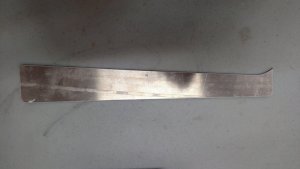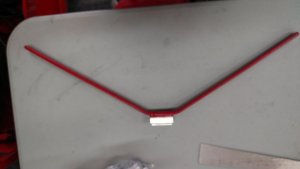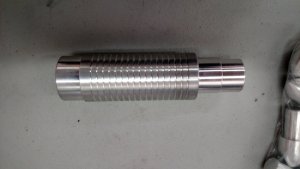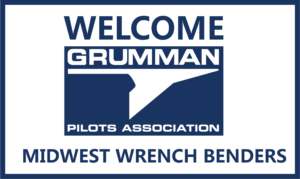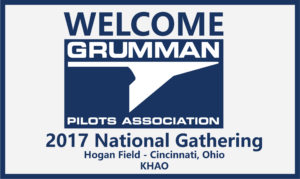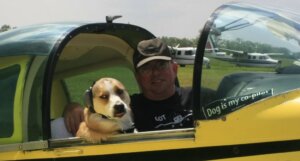Electronic Ignition Sale
ElectroAir Electronic Ignition System (EIS) is having an end of year sale. From November 1 to December 31, they are knocking $357.00 dollars off the regular price of $3,570.00 for the 4-cylinder install kit.
For those of you interested in an EIS, you may find it hard to find factual data from folks you have installed them on their planes. Here is a bit of what you can expect.
Starting becomes a second blade event, hot or cold.
More aggressive lean and lower fuel burn (safely a gallon an hours less)
Make engine very smooth able to fire lean mixtures during throttle changes.
Install High Energy plugs in the bottom holes and let the mag fire the top plugs. The lower plugs stay clean due to scavenging fire of the plug during exhaust at TDC.
High Altitude operation due to spark advance, up to 40 degrees BTDC to strike piston at 11 degrees past TDC for maximum thrust on piston face.
ICAS
The MTH (Magneto Timing Head) needs to be replaced at engine overhaul. The spark plug high energy leads need to be replaced every 5 years, and the High-energy spark plugs have a service life of 500 hours.
YouTube Videos
You may have noticed in the latest videos an audio intro starting with ‘Clear Prop.’ I would like to thank Matt Wing for this. A few videos later we added a single engine piston engine flyby as it drones away.
To help with finding videos we have added a complete video list that will be maintained to the website as an option under “Channel” option. i.e. Channel-> YouTube Video List
443 videos now in the collection.
Subscribers 51this last month bringing total to 426
Views 10,554 last 28 days with a total of 69,900 views.
Watch time 47,235 minutes for the last 28 days.
Although the USA get most of the views, it is interesting to see what other countries are watching. These include:
Canada
United Kingdom
Brazil
Libya
Spain
Lithuania
Australia
Germany
Ireland
Poland
Sweden
Singapore
Ukraine
Denmark
France
Hungary
Indonesia
South Korea
We are Working with Bob Reed to import his propeller series of videos into the ‘Grumman Pilots’ Channel, stay tuned for these and the announcement.
We also received our first royalty payment from Google for the videos. You may also have noticed that we are in 28 countries now, mostly found from the YouTube videos we put out.
Keep the suggestions and requests coming.
Membership
1277 Members as of this newsletter.
Forum Posts
[wpmlpost post_id=”7826″ eftype=”excerpt”]
[wpmlpost post_id=”7855″ eftype=”excerpt”]
[wpmlpost post_id=”3772″ eftype=”excerpt”]
[wpmlpost post_id=”7869″ eftype=”excerpt”]
The Dreaded Pre-Purchase, Myths and Mysteries
(Adapted from Bondline.org)
Note: Buy the bet plane you can afford at the onset. Thinking you will find a bargain project and be able to do a lot of the work yourself and have a great plane at the end of it that you can sell for a profit is a myth. Just buy the best plane you can afford.
There are as many different ideas on the proper scope and depth of a pre-purchase inspection as there are buyers. What makes that interesting is the expectations of those buyers, and how those expectations change after owning a plane for 11 months and having gone through the dreaded “first annual”.
When is it a better time to discover the true condition of the plane, during the purchase process or after the money has changed hands and the plane has flown away? This is the reason it is suggested that a purchaser do a thorough pre-buy and do all that is reasonable to identify things that will later bite him in the wallet. What that means is a full annual inspection by the checklist in the factory maintenance manual — 13 pages for the AA-5x, a few less for the AA-1x.
“But it just had a fresh annual last month and has flown nearly no hours since then.”
Perhaps, but who did the inspection, and did you get a copy of the signed, dated list of discrepancies?
Most planes sell because the owner is moving on. Sometimes it’s to larger or smaller aircraft, but often it’s away from aviation. So what did they tell the mechanic that performed the last annual? Probably something along the lines of: “I’ve got it listed in T-A-P, so don’t spend any money on it that you don’t have to.” That is a pretty sobering thought when you know that you are going to take your family and friends up in your new plane just as soon as you can get it home.
Another factor that enters the discussion is that an “Annual Inspection” is just that, INSPECTION. As in ‘LOOK AT IT.’ No repairs or service work are part of the inspection. And while it’s true that the basic oil, filter, fluid levels and mag timing checks are regularly performed in conjunction with the inspection, that is just a convenience for the owner, since the plane is in the shop, they have it opened up, and most planes haven’t had any service work since LAST year.
So if it’s just been inspected, and no actual work was done to repair or improve the plane, just what did you get? Probably just bare minimum that the FAA requires for the plane to be legally operated. Certainly nothing that says there won’t be any catastrophic failures or even minor items wearing or breaking on the very next flight. The plane was just “looked at”. Maybe sort of a super pre-flight.
There have been many tales on the GG of woe and expense after purchasing a plane, and yet it seems that new buyers never learn, and the same mistakes are repeated again and again.
Lets go over some items that really ought to be checked during the pre-buy inspection on your intended purchase.
Paperwork
As strange as it may seem, the FAA is more focused on the paperwork than they are on the actual components. The reason for this is that if the paperwork is correct, then the physical components can be manipulated to create “Airworthiness”. However if the paperwork is incorrect, then one can not make the plane “Airworthy” because the records that support the airworthiness are incomplete or inaccurate. The FAA takes this to the point that the DATA PLATE is the component they are most interested in, the rest of the airplane or engine are just parts which can be replaced as needed.
One must have the “AR(R)OW” paperwork for flight, and one must have an Airworthiness Certificate to determine that the aircraft in question was EVER in a condition to hold US Certification. Many planes were built and shipped overseas without ever having US paperwork, such as the ones that went directly to Canada that often are brought back to the US later. The price, especially considering the current exchange rates, may be very attractive, but one is left to PROVE to the FAA that the plane conforms to its Type Design and is therefore eligible to have an airworthiness certificate issued.
Logs are an important part of the paperwork. It’s quite common to see planes for sale with some or all of the logs missing. This is a big red flag for the novice buyer. WHY are the logs missing? It could be that they were truly lost or destroyed. It’s possible that the plane was a repossession or transferred in an estate at some time, and the logs were not available to the new owner. Or, a more nefarious possibility, they were intentionally kept back to avoid the documenting of repairs from some unreported accident! Perhaps there were even substandard repairs that included the use of undocumented parts or unapproved repair techniques. Lost logs require an even higher level of due diligence on the part of the inspector and purchaser.
Prop
Props have a TBO, just like engines. When is it due for an OH? Just consult the manufacturer’s data for the prop in question. Most fixed pitch props are due for OH at engine OH, or at any time that they have wear or damage that exceeds the prop manufacturer’s field dressing limits. Props are a “Class 1” appliance in FAA speaks, and that means that they SHOULD have their own log. Most older planes do not, and this then makes it more difficult to establish the history of that prop. Models such as the McCauley prop used on the 70’s production Tiger have AD mandated inspections every 200 hours. Without a dedicated prop log, where are those entries kept? Usually in the Airframe log, but what if a prop is bought used, did you get the airframe log entries showing past compliance with the AD and an accurate Total Time in Service? Better obtain a $5 prop log and transfer the available history to it, and begin logging inspections and maintenance from here forward.
Airframe
The single largest issue can probably be summed up in one word: Corrosion. As the fleet ages and time takes its toll on our light alloy airframes, oxidation is the number one problem that the fleet faces. The factory engineers never expected that we’d be flying significant portions of the fleet 35 years after production. They built the planes to last 10-15 years, and then expected that we’d scrap them and buy new ones. If aviation products didn’t go up at over twice the rate of inflation, perhaps that would be the case. A new $30,000 Tiger? Sure, where do we mail the check?
Recently there seems to be a rash of planes with corrosion in the center spar. Not some light surface corrosion that might leave little pits in the spar tube, but full blown inter-granular corrosion that was raising bumps on the spar tube. This requires an expensive center spar and many hours of labor to replace it. Not all planes that have this sort of corrosion are “Florida” planes. The corrosion is severe enough on many planes that you have to ask WHEN in the last 20+ years of annual inspections was this overlooked, since it was quite obvious that it hadn’t JUST popped up in the last few months.
Engine
Sellers are very fond of speaking highly of the good running of the engine, even though it’s at or very near TBO. The implication, if not outright spoken statement is that TBO is just a “suggestion” and since THIS engine is running so well, has such fine compression and uses negligible oil between changes, that it’s going to reach TBO and even go well beyond.
Of course this is total hogwash. No one can predict the future accurately by relying solely on past events. There are inspections such as the SB388C “Valve Wobble” test to check for hidden wear, and even invasive inspections like pulling cylinders to look at the cam and tappet bodies for spalling and corrosion to help determine if the engine is healthy. The manufacturer (Lycoming) has established a TBO based on field experience. What Lycoming has actually said is the criteria for determining what the REAL TBO for a particular engine should be is in Lycoming SI 1009AR, and is based on 12 calendar years, OR 2000 hours, WHICH EVER COMES FIRST. (Or 2400 for O-235C and O-235L series in the AA-1x, under certain restrictions.)
Now, how do you feel about that 30-year-old engine with “mid-time”? It’s already 250% past it’s factory recommended TBO! Busting the TBO by a few percent is one thing, by 2-1/2 times is another?
The Inspection Process
The inspection should be performed on the plane after the owner and the prospective purchaser have met, flown the plane, and negotiated a price for sale ‘in its stated condition. ‘ The buyer should ask for and the seller should supply a complete list of every known squawk. This along with the Total Time of the airframe, engine and prop, the list of installed equipment and an accounting of the life limited components (spar tubes and wing attach shoulder bolts on AA-5x/AG-5B series, no life limited parts on the AA-1x series) comprise the documentation of the stated condition.
At this point, the price has been agreed to, the buyer wants to purchase the plane, and the seller is willing to sell and warrant the plane to be as represented.
The seller now schedules the Pre-Purchase Inspection, with the intent of determining if the plane meets the stated condition. The purpose is not to pick the airplane to pieces and scare away the buyer or to find thousands of dollars worth of work the seller should pay for, rather it is to establish the true condition of the plane for comparison with the previously prepared squawk list. It’s possible (and desirable) to do a PPI on a WRECKED plane. Again, the purpose is to bring to light the true condition of the plane, so that both parties are aware and accept the current condition as the basis for the sale.
It’s quite common to surprise the owner with items that are worn, cracked, corroded, etc. And the seller and buyer make adjustments in the price to account for them, or the seller has them repaired to everyone’s satisfaction, in order to bring the plane back to the previously stated condition, upon which the sale price was negotiated.
Christmas Presents
I was talking today with a Grumman owner who was curious what Xmas presents we might have for friends and family to give him this year. Fifty dollars was the target, so we talked about Rudder Springs )sexy right?), air vent kits, nav lense kits, spark plugs (2 for $50), etc.
While we are on Christmas, if you care about your feet being comfortable, then let me tell you about the socks that Luann just bought for me. They are called ‘Spyder’ 3 to a pack and quite comfortable even for long days on the concrete floor of the shop.
New Traveler Emblems
The original Travelers came out with this emblem on the fuselage, below the canopy aft of the pilot. We have just completed this project and have orders a supply.
Also in the works are similar emblems for each of the 2-seaters, Yankee, Trainer, TR-2, T-Cat, and Lynx. We did not leave out the 4-seaters and have the Traveler pictured here, along with Cheetah and Tiger.
Wrench and Elbow Bending
We have scheduled another in this popular series for this coming January in Kahului HI. Bill Baldwin has loaned us the use of his hangar with some overflow. Should bring some much needed maintenance to some of our flock.
Inboard Fuel Tank Leak
I have a fairly recently purchased Tiger that has developed a fuel leak near the wing root right along the rubber trim gasket that goes around the wing. I’m assuming this is bad news and was wondering if you could give me a ballpark quote as to the amount of $ we are talking to reseal the tank.
Since it is leaking in the inboard section, it can only be from three sources.
The tank itself, usually under the spar, that means a inboard rib scrape and clean and a reseal and test, and then maybe another reseal. Figure 1,000 dollars or more.
Fuel or vent lines, not likely but it does happen. Maybe $100.
Fuel sender or fuel sender gasket leaking. Usually just a gasket change after draining the tank. Under $200 for sealing and gasket. More if sender is leaking.
Any long persistent fuel leak will leave a blue stain, if long enough in time, then it will look black and tar like.


